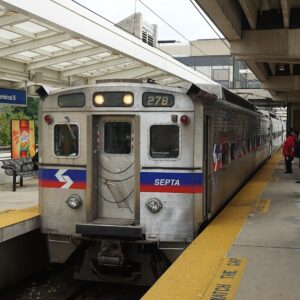The U.S. Senate recently confirmed two new members to the five-person Surface Transportation Board, the agency responsible for regulating our nation’s railroads, including companies such as CSX and Norfolk Southern in Pennsylvania.
Ascending to power at the agency is Pennsylvania’s own Michelle Schultz, formerly the deputy general counsel at the commuter rail entity SEPTA.
She enters the federal agency at a unique time: The coronavirus pandemic ravages parts of the economy while demonstrating the critical need for transportation companies that move the things on which consumers depend. This includes the highly regulated freight rail sector, which has increased its role in moving consumer goods as a result of changing behaviors.
The question for members in a Democrat-controlled Washington is whether to embrace the current system or increase market intervention? For the sake of consumers in the Keystone State and beyond, we must hope policymakers remember history and void rail re-regulation.
Indeed, the historical record confirms the devastating impact that overreaching government regulations can have on the rail industry. For most of the 20th century, strict government rules controlled rail routes, rates, and the use of investment. Back then, prices were established by regulators in ways that discriminated between who the rail operator was, the type of commerce being transported, the routes and final destination, and the length of the haul — all baking in subsidies for routes that were financially viable in a competitive marketplace.
At the same time, after construction of the interstate highway system during the 1950s and 60s, the heavily regulated railroad industry found itself competing with a competitive trucking industry. The trucking industry wisely cherry-picked the rails’ most profitable lines, which were set by rail regulators at higher prices in order to subsidize unprofitable rail lines. Because railroads were unable to change their calcified and government-mandated prices and not allowed to abandon unprofitable rail lines, they were unable to complete and earn reasonable returns on their investments.
In fact, by the 1970s, the regulatory burden had become so onerous that industry returns on investment averaged only 2.4 percent and several major carriers faced imminent bankruptcy.
In response, Congress passed landmark legislation through the Staggers Rail Act, allowing rail carriers more control over their operations. Railroad regulatory reforms permitted pricing flexibility, which increased intermodal rivalry.
The industry soon experienced an unprecedented recovery, including strong productivity growth and a dramatic decline in rail rates. Today, consumers enjoy approximately $10 billion in annual benefits because of these reforms.
If we have learned anything from history, it is that the nation should never go back the dark days of excessive price and earnings regulations. As reformation of rail policy as well our research has shown, regulatory reforms, when done correctly, can provide huge benefits to the nation in general, heighten competition, and benefit consumers in particular.
Thus, Washington regulators must tread lightly. Expanding government involvement in private economic dealings — separate from safety regulation — would certainly jeopardize the underappreciated gains and consumer benefits of the past.
While new powers in Washington may feel a reflexive need to regulate more – undoing parts of the Trump administration’s policies – rail regulation at the STB should not be part of this agenda. In fact, the past regulatory reforms noted here were all spreadhead as Democratic policies, and they worked. For these reasons, the Surface Transportation Board should reject any major policy change unless there is credible evidence of a market failure. Doing otherwise would come at a dear cost to consumers.
Steve Pociask is president and CEO of the American Consumer Institute, a nonprofit educational and research organization. www.

